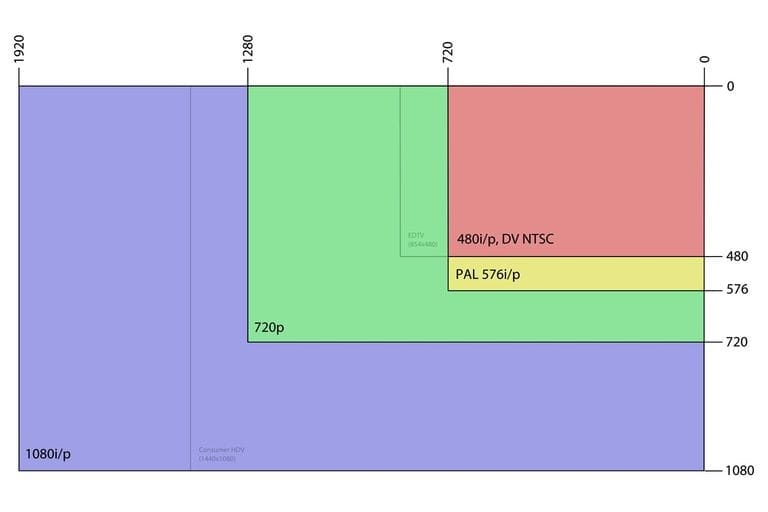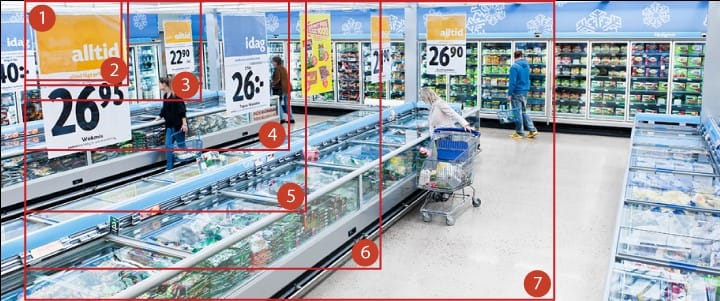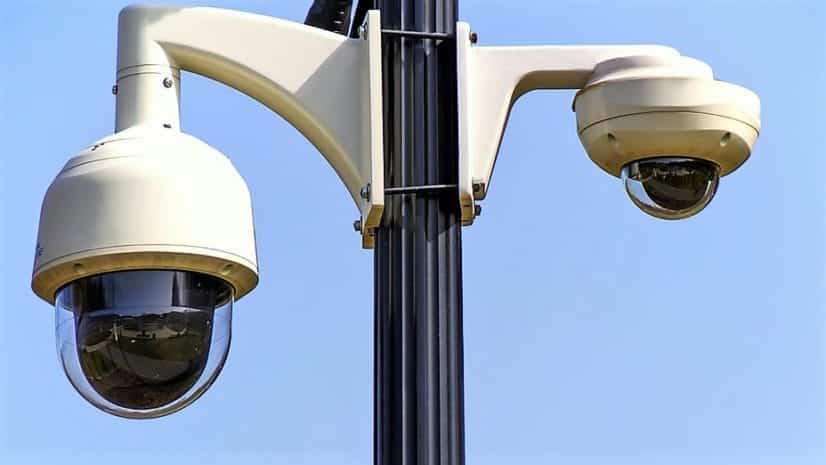Creating a usable video surveillance solution is a need we come across on a daily basis. Although there are many components to a video solution, resolution – or image size – is one key component. The most recent advancement to become financially feasible for small-to-medium sized businesses is the introduction of 4k into the video surveillance market. The most common question we hear right now is, "Do I need 4k video surveillance?" The answer is simple and vague: "It depends." With that in mind, let’s look at the difference between 4k and 1080p, and what may fit YOUR application.
What is 4k and 1080p?
In recent years, 1080p has achieved incredible success, driven by the consumer electronics market. The video surveillance market follows suit. 4k Ultra HD is now a leader in the consumer electronics market, and in the video surveillance arena it promises outstanding image quality and details.
This size comparison helps put 1080p into perspective:

1080p provides up to five times higher resolution than standard analog video. 1080p also has better color fidelity and a 16:9 format. However, the 4K advancements have made 1080p seem small by comparison:
Get the surveillance video camera information you need right away.
Let's Chat

A comparison of various resolutions.
1: 4 CIF (704x576)
2: SVGA (800x600)
3: HDTV 720p (1280x720)
4: HDTV 1080p (1920x1080)
5: 3 MP (2048x1536)
6: 5 MP (2592x1944)
7: 4K (3840x2160)
As shown above, 4K Ultra HD provides up to four times higher resolution than standard 1080 resolution. 4K Ultra HD uses the 16:9 format.
1080p and 4K Ultra HD are based on square pixels – similar to computer screens – so 4K video from video surveillance cameras can be shown on either HDTV screens or standard computer monitors. The 1080 and 4k cameras may also be connected to a network, just like lower resolution IP cameras. Additionally, you can convert your existing analog cameras into an IP video solution. This means you can start to integrate higher resolution cameras into an existing analog or IP surveillance solution. Granted, your monitor will only display the resolution it’s capable of, but the video is recorded in the resolution of the camera.
1080p vs 4k
To ask "which is better, a 1080p or 4k security camera?” is not an easily answered question. Asking a few more specific questions will help you determine which is correct for YOUR project.
- Per camera, what costs less, a 4k or 1080p surveillance camera?
- 1080p will most always win (if it doesn’t, let me know where you're buying so I can too)
- Which camera allows me to capture a larger space?
- 4k wins this one- that’s science.
When pricing an entire system, image size and coverage plays into the cost question. Yes, a 1080p camera is less expensive – but if I can see more with a 4k I can use fewer cameras. This line of thought makes 4k a better selection for parking lots, open warehouse environments, gymnasiums, cafeterias, playgrounds, open office plans, and so on. With digital zoom technology and the 4k pixel quantity, video is much sharper and focusing in on a recording will be dramatically improved over a 1080 video.
This is great if you require a fixed large image with the ability to zoom. But what if you need some tracking or want one camera to take on the role of multiple cameras? Again, the answer depends on your application. In city surveillance applications, retail and multi-tenant building parking lots, airports, and hallways there are some cool things happening with 1080p and 4k surveillance cameras. Take a look below at some specific cameras to help determine if 1080 or 4k is right for your application.
1080p camera with tracking
1080p 360 degree multi sensor video surveillance camera
4k 180 degree panoramic multi sensor surveillance camera
Costs may move you from 4k to 1080p, but what else should you be concerned about?
- Are all cameras created equal?
- Take a look at the optics. If a sensor is of similar size as the equivalent HD sensor and it has 4x the pixels, a lower light video will be 4x lower.
- What impact will it have on my network?
- Streaming bandwidth will be close to 4x larger unless better compression is used.
- Oftentimes the data network is overlooked in an IP camera installation. This is why working with a well-rounded solution provider is imperative. Taylored Systems is not just a security provider, but also a network expert.
- What impact will it have on my storage?
- As with network impact, the size of the video will be 4x the size of a 1080 file.
To sum it all up, here are the key facts and considerations when you’re comparing 1080p vs 4K in a surveillance context:
- Why 4k video surveillance?
- When you need a larger and clearer image
- Who is it for?
- Anyone with a budget that allows the use of the highest resolution in video surveillance or can justify the cost by the application.
- Examples: city surveillance, warehousing and production, schools, campus environments, airports, open office environments, and multi-tenant buildings
- Do I have to replace my existing system?
- You can integrate your existing analog cameras into a new IP platform or you can add 4k into an existing IP video surveillance solution.
- Will 4k cost more?
- On a per camera basis, yes. But as a solution it may not.
- Pros for 4k vs 1080p
- Future proofing. Yes, there will be more advancements with video resolution. There are already companies testing and applying 8K solutions. However, it will be a number of years before those technologies are financially feasible for small to medium businesses.
- Largest image available
- Clearest image available
- Perfect for a large general view with the ability to zoom
- Cons for 4k vs 1080p
- More network resources needed
- More storage needed
- Higher cost per camera
Now that you’re aware of the definition and difference between 4k and 1080p, how each resolution may fit into your environment, and how each resolution can be applied, are you ready to start designing your own? Taylored Systems would love to help and make sure you are creating the best solution from camera selection, placement, cabling and network design to installation and ongoing maintenance.

